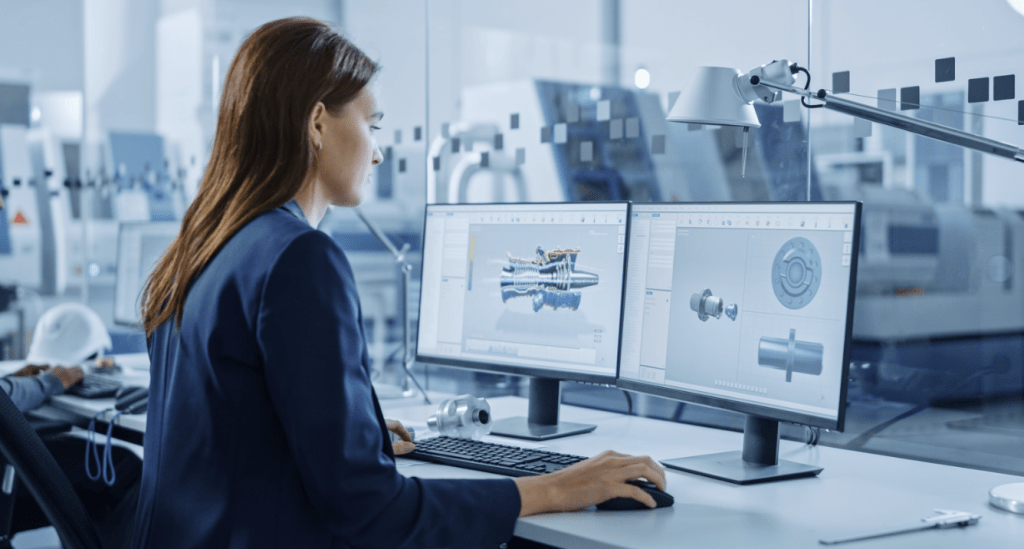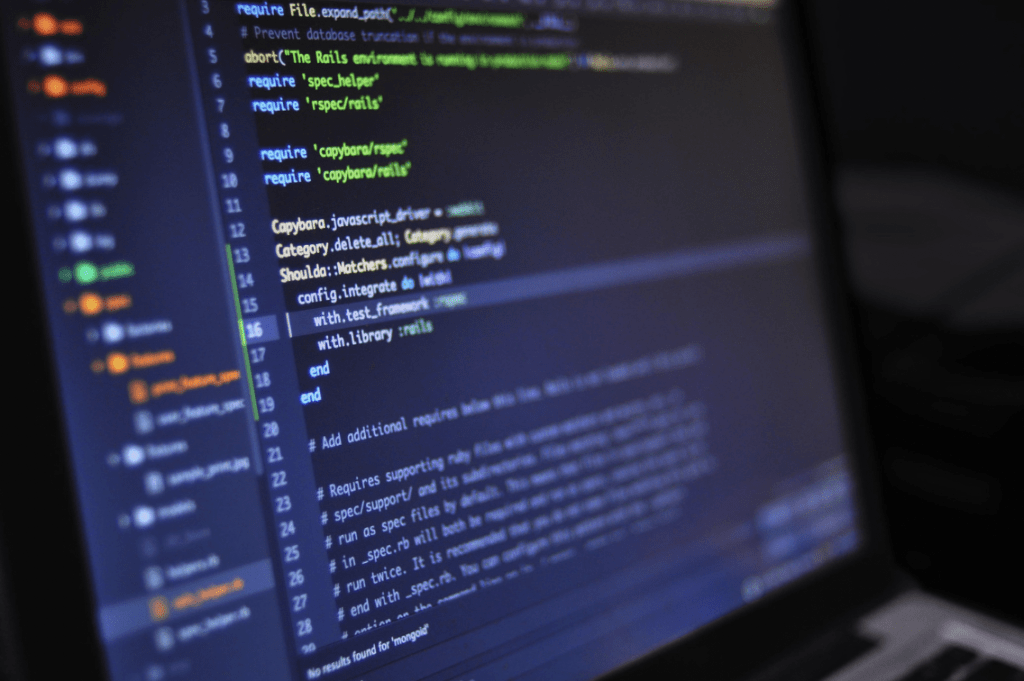Artificial Intelligence (AI) has emerged as a transformative force across various industries, revolutionizing the way we approach problem-solving and innovation. In the realm of software engineering, AI is reshaping traditional practices and paving the way for more efficient, intelligent, and robust software development processes. In this article, we will delve into the profound impact of AI on modern software engineering practices.

Software engineering, once a domain predominantly reliant on human expertise, is now witnessing the integration of AI technologies at every stage of the development life cycle. This transformation is particularly notable within software product engineering services companies, where the infusion of AI is automating mundane tasks and elevating decision-making processes, fundamentally altering the landscape for software engineers.
Evolution of AI in Software Engineering
The incorporation of AI in software engineering is not a recent phenomenon. Over the years, AI has evolved from basic automation tools to sophisticated machine learning algorithms and neural networks. This evolution has brought about a paradigm shift in how software is conceived, developed, and maintained.


AI-Powered Code Generation
One of the most noticeable impacts of AI on software engineering is in the realm of code generation. AI algorithms can analyze patterns, understand coding standards, and generate high-quality code snippets. This not only accelerates development timelines but also reduces the likelihood of bugs and errors.
Benefits
AI-powered code generation introduces a multitude of advantages that significantly impact software engineering practices. Let’s explore these benefits in detail:
1. Accelerated Development Cycles
AI algorithms excel in analyzing patterns, understanding coding standards, and generating high-quality code snippets swiftly. This acceleration in the code generation process translates to shorter development cycles, allowing teams to deliver software products more rapidly.
2. Improved Code Quality
The precision and efficiency of AI-driven code generation contribute to an overall improvement in code quality. By adhering to coding standards and identifying potential issues during the generation phase, the need for extensive debugging and error correction is reduced, resulting in cleaner and more reliable code.
3. Enhanced Maintainability
Code generated through AI algorithms often adheres to best practices and follows a standardized structure. This not only facilitates ease of understanding for developers but also enhances the maintainability of the codebase. Updates, modifications, and future enhancements become more straightforward, leading to long-term sustainability.


Intelligent Testing and Quality Assurance
AI is revolutionizing the testing and quality assurance processes by introducing intelligent automation. AI-powered testing tools can simulate diverse user scenarios, identify potential vulnerabilities, and ensure comprehensive test coverage. This results in more reliable and secure software products.
Advantages
1. Increased Test Coverage
AI-powered testing tools possess the capability to simulate a wide range of user scenarios, ensuring comprehensive test coverage. Unlike manual testing, which may have limitations in covering diverse scenarios, AI-driven testing can explore various paths and conditions, leading to more exhaustive testing and reduced chances of overlooking potential issues.
2. Early Detection of Bugs
The intelligence embedded in AI-based testing allows for the early detection of bugs and vulnerabilities. By analyzing patterns and historical data, these tools can identify potential issues before they escalate, enabling development teams to address them proactively. This early detection contributes to the overall robustness and reliability of the software.
3. Greater Software Reliability
The comprehensive and intelligent testing facilitated by AI contributes to greater software reliability. The ability to identify and address potential issues early in the development process ensures that the final product is more stable and resilient. This is particularly crucial in industries where software reliability is paramount, such as healthcare, finance, and critical infrastructure.
Predictive Analytics for Software Maintenance
Traditional software maintenance often involves reactive approaches to fixing issues. AI brings a paradigm shift by enabling predictive analytics. Machine learning models can analyze historical data to predict potential issues, allowing engineers to proactively address them before they escalate.
Key Features:
1. Predictive Issue Identification
One of the primary features of predictive analytics is its ability to identify potential issues before they manifest. By analyzing historical data, machine learning models can recognize patterns and trends indicative of future problems. This proactive approach allows software engineers to address issues preemptively, minimizing downtime and enhancing the overall stability of the software.
2. Proactive Maintenance Strategies
Predictive analytics enables the formulation of proactive maintenance strategies. Instead of reacting to issues as they arise, software maintenance teams can anticipate and plan for potential issues based on predictive insights. This shift from reactive to proactive maintenance ensures a more efficient allocation of resources and reduces the impact of unforeseen disruptions.
3. Reduced Downtime
The predictive nature of analytics in software maintenance directly contributes to reduced downtime. By addressing potential issues before they escalate, maintenance activities become more strategic and less disruptive. This results in a smoother operational flow, increased system availability, and ultimately, a positive impact on the overall user experience.


Personalized User Experiences
AI is instrumental in creating personalized user experiences by leveraging data analytics and machine learning. Software can adapt to user preferences, anticipate needs, and provide tailored recommendations. This not only enhances user satisfaction but also contributes to increased user engagement.
Elements of Personalization:
1. User Behavior Analysis
AI-driven personalization begins with a thorough analysis of user behavior. By collecting and analyzing data related to user interactions, preferences, and engagement patterns, the system gains insights into individual user habits. This information forms the foundation for creating personalized experiences that align with the unique needs and expectations of each user.
2. Dynamic Content Adaptation
Personalized user experiences involve the dynamic adaptation of content based on real-time user interactions. AI algorithms continuously assess user behavior, adjusting the presentation of content, recommendations, and features accordingly. This dynamic adaptation ensures that users receive content that is relevant, timely, and aligned with their current preferences.
3. Context-Aware Recommendations
Context-aware recommendations leverage AI to understand the context in which users are interacting with the system. Factors such as location, time of day, and user intent are taken into consideration to deliver recommendations that are not only personalized but also contextually relevant. This enhances the user experience by providing recommendations that are more likely to resonate with the user in a given situation.


As we navigate the evolving landscape of software engineering, the integration of AI stands out as a defining factor. From streamlining development processes to enhancing the end-user experience, AI is a catalyst for innovation. Embracing these technological advancements is not just an option but a necessity for staying competitive in the dynamic world of software development.
Frequently Asked Questions
1. How does AI impact the role of software engineers?
AI transforms the role of software engineers by automating routine tasks, enabling faster development, and emphasizing a more strategic focus on problem-solving and innovation.
2. Can AI completely replace manual testing in software development?
While AI-powered testing tools are becoming more sophisticated, manual testing remains crucial for certain scenarios, especially those requiring human intuition and creativity.
3. What challenges come with the integration of AI in software engineering?
Challenges include ethical considerations, potential biases in AI algorithms, and the need for continuous learning to keep up with evolving AI technologies.
4. How can small development teams leverage AI in their projects?
Small development teams can benefit from AI by using pre-built AI tools, exploring cloud-based AI services, and focusing on specific AI applications that align with their project goals.
5. What is the future outlook for AI in software engineering?
The future of AI in software engineering looks promising, with continued advancements in areas such as natural language processing, automated documentation, and further integration of AI-driven decision-making processes.
WE SAID THIS: Don’t Miss…Telecom Resilience: How Connecting Gaza Provides Lifelines With 100K+ E-SIMs



